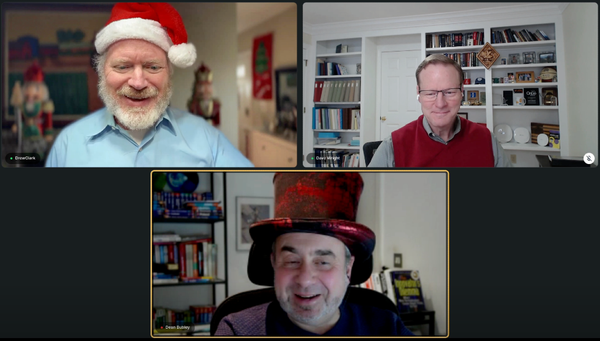How To Unlock Innovation: The Aspen Summit 2008
ASPEN, COLORADO, August 17 – The Progress and Freedom Foundation’s 2008 Aspen Summit, Unlocking Innovation, began today with the opening keynote address by John Horrigan of the Pew Internet & American Life Project, who focused his comments on the contribution users can make to technological innovati
Drew Bennett
Blog Entries
ASPEN, COLORADO, August 17 – The Progress and Freedom Foundation’s 2008 Aspen Summit, Unlocking Innovation, began today with the opening keynote address by John Horrigan, the Associate Director of Research for the Pew Internet & American Life Project who focused his comments on the contribution users can make to technological innovation.
The annual conference draws leading experts on technology policy and representatives from the technology and media companies driving innovation in the U.S. The Progress and Freedom Foundation’s [PFF] President Ken Feree heralded the Aspen Summit as the premier venue for policy makers and corporate strategists seeking free market solutions to the problems that plague the technologies industry. Mr. Feree noted that PFF and the Aspen Summit have both observed and been engaged with key evolutions in Internet technologies since the inaugural meeting in 1998.
Meredith Attwell Baker, Director of the National Telecommunications and Information Administration [NTIA], contributed opening remarks as well and highlighted the hands-off approach of her administration as being a key to unlocking technological innovations and sustaining the US’ leading global role in the communications industry. Ms. Baker expressed her concern over the possibility of government intervention in markets disrupting the development of new technologies in the US. Citing support for a recent FCC decision that might signal such interventions in the network management practices of Internet providers, the NTIA director urged strong restraint among policy makers until the full range and impact of these practices is fully understood.
John Horrigan’s opening keynote address followed these speakers, and he too expressed his concern for the future of innovation in the US, recalling the early 1980s when government policies failed to facilitate US technological competitiveness with nations like Japan. To avoid such doldrums in this decade, Mr. Horrigan posited that consumers and users of technology have a lot to offer when it comes to unlocking inovation and highlighted the work of Eric Von Hippel and his lead-user theory.
Mr. Horrigan’s recent research at the Pew Internet and American Life Project is also concerned with the users of contemporary communication and media technologies and what both firms and policy makers can learn from the users. To this end, John has developed a comprehensive typology of users, from the “always-on,” high disposable income twenty-eight year old white male geek with 5 blogs and a constant twitter stream, to the latina petacurist who owns two cell phones and can text faster than you can speak but may rarely use the Internet.
The point: user engagements with technology are extremely diverse, but there are typologies and there are many opportunities to learn about the user experience in order to improve it. The code for the next big innovation in communications technology might be programmed in a lab, but understanding what that code should be may start in a user’s car, dorm room or basement. Horrigan suggests that there is a lot to learn, even at the edge of his user-typology where the most common statement about their technological devise is “I can’t get it to work.”
No doubt John’s words are fully understood at BroadbandCensus.com, where accurate data on broadband connectivity depends on user input. And that’s the key follow-up to research like John’s, companies need to figure out the best way to engage users. Lead-users who are always online and tinkering are easy targets, but adapting technology to users at the opposite edge of the typology who may be a silent majority will be a much greater challenge.
Full results of John Horrigan’s research won’t be out for a few months, but keep an eye out for what should be more excellent (and free!) research from Pew. And look for more from BroadbandCensus in the coming days from the Aspen Summit.









Member discussion